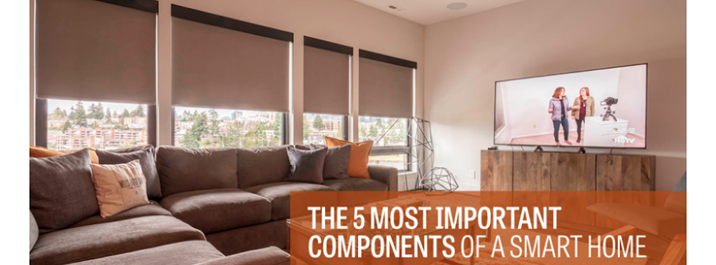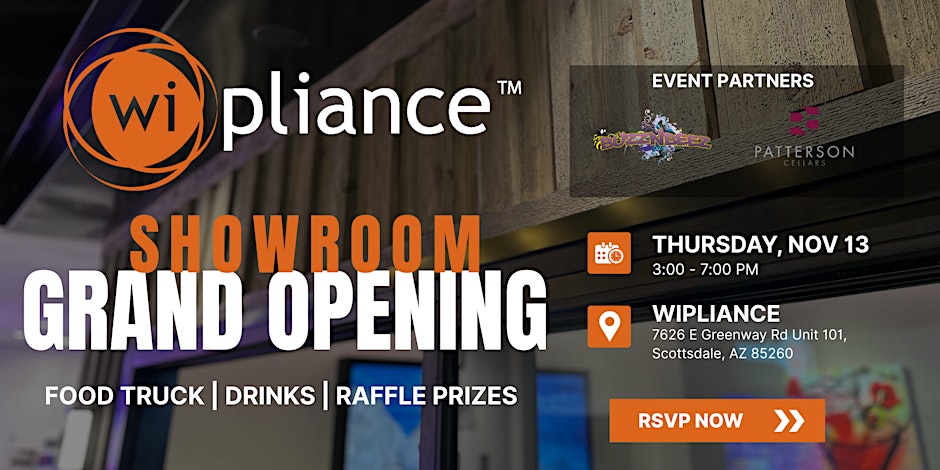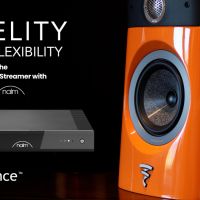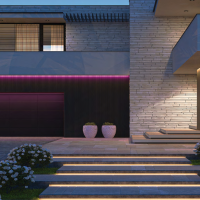What Is A Smart Home System: The 5 Most Important Components

What Is A Smart Home System: Understanding the 5 Most Important Components
As smart homes continue to capture the imagination of homeowners worldwide, understanding the core components that make up these advanced systems is crucial. At Wipliance, we focus on five essential elements that ensure your smart home is not only functional but also seamlessly integrated for maximum convenience, efficiency, and security.
Remote Access and Your Smart Home Platform
Remote access serves as the gateway to modern home convenience, allowing homeowners to manage their properties through a smartphone or tablet, no matter where they are in the world. This component is critical as it integrates various home systems into a unified control hub, often referred to as the brain of the smart home. With remote access, you can perform a multitude of tasks. For example, adjusting your heating and cooling systems before you arrive home, monitoring security cameras in real-time, or even remotely starting your washing machine.
The technology hub itself consolidates control of all your smart devices into one interface, making it easier to operate your home’s functionalities. Popular platforms include Google Home, Apple HomeKit, and Amazon Alexa, each offering varying degrees of customization and compatibility. The right hub not only communicates with all devices but also processes data and automates tasks based on your preferences.
Practical Applications of Smart Devices:
Remote Surveillance for Security and Peace of Mind: With remote surveillance capabilities, homeowners can enjoy an unprecedented level of security and peace of mind. Whether you are away on vacation or working late at the office, having the ability to check in on your property at any time from your smartphone is invaluable. This feature allows for real-time viewing of security camera feeds, immediate alerts to any suspicious activity, and even the ability to communicate with visitors through two-way audio systems, ensuring that your home is safe no matter where you are.
Control Various Home Systems with Simple App Commands: The modern smart home hub integrates various home systems into one manageable application, making it incredibly convenient to control your home’s functionalities. From adjusting your HVAC system to setting up home entertainment for guests, everything can be managed with a few taps on your smartphone or a spoken voice command. This centralization simplifies the management of your home, making daily routines more efficient and allowing you to customize settings to suit your lifestyle seamlessly.
Convenience: The convenience offered by smart home systems extends significantly into how homeowners manage access to their residence. With the ability to remotely unlock doors for guests or service personnel, homeowners can provide entry to their home from anywhere, at any time, without compromising security. This feature is particularly useful for those unexpected moments when friends arrive early or a service appointment needs to commence while you're still away. It eliminates the need for spare keys and the security risks associated with them, ensuring that homeowners maintain complete control over who enters their home and when, all through a secure, user-friendly interface on their smartphone or other devices.
Advanced Home Security Systems and Smart Locks
Smart home security is about more than alarms and notifications; it’s about creating a comprehensive safety net. Advanced security systems integrate various components, such as motion detectors, window sensors, smart doorbells, and high-definition cameras, to provide a holistic view of your home’s security. Smart locks add another layer, allowing doors to be locked or unlocked from anywhere, providing both convenience and safety.
These systems can be programmed to recognize family members and frequent visitors using facial recognition or biometrics, enhancing security while providing ease of access to authorized individuals. In the event of unusual activity, the system can alert you directly on your smartphone, allowing for immediate action.
Enhanced Security Features:
Integration with Emergency Services for Immediate Response: Integration with emergency services is a vital feature of advanced smart home security systems, providing homeowners with an immediate response capability in the event of an emergency. This functionality ensures that when a security alarm is triggered, whether by a potential break-in, fire, or other critical situations, the system automatically notifies local emergency services for rapid dispatch. This direct connection to emergency responders can significantly decrease response times, increasing the safety and security of both the property and its inhabitants. It offers peace of mind, knowing that your home is not only monitored but also directly linked to professional assistance when it matters most.
Intelligent Notifications for Enhanced Awareness: Advanced smart home security systems provide intelligent notifications that keep homeowners informed about what is happening in their home in real-time. These smart alerts can differentiate between routine occurrences and potential threats, such as unknown visitors or unexpected movements, allowing homeowners to respond appropriately. This level of detailed notification helps in maintaining high security and responsiveness, adapting to the homeowner's preferences for alerts and notifications.
Customizable Options for Tailored Security Solutions: Smart security systems offer extensive customization options, allowing homeowners to tailor security settings to their specific needs. Whether it’s setting geofencing parameters, customizing alarm sounds, or establishing unique user profiles for family members and staff, these systems adapt to provide a personalized security solution. Such flexibility not only enhances security but also ensures that the system is efficient and manageable according to individual preferences and requirements.
Fast Home Network for Smart Home Devices
A fast and reliable home network is the cornerstone of any effective smart home system. As more devices connect to the Internet of Things (IoT), the demand for bandwidth increases. Homeowners must consider not only the speed but also the capacity of their home network to handle multiple devices simultaneously without lag or interruption.
Enterprise-grade networking solutions, such as high-speed routers and multiple Wi-Fi access points, ensure that every corner of your home receives strong signal coverage. This is especially important in larger homes or for devices that require a constant connection, such as security cameras or smart thermostats. Additionally, consider the benefits of a wired network for critical components to ensure stability and security in your connectivity.
Key Networking Considerations:
Bandwidth Requirements for Simultaneous Device Operation: As homes become smarter and more devices connect to the internet, it's crucial to have a network that can handle high bandwidth requirements. This ensures that all devices operate smoothly and simultaneously without any lag or interference. An adequate home network supports everything from streaming high-definition videos and online gaming to running smart appliances and security systems, providing a seamless digital experience throughout the house.
Security Protocols to Protect Your Network from Unauthorized Access: Maintaining network security is paramount in a smart home environment. Implementing robust security protocols protects your network and connected devices from unauthorized access and potential cyber threats. This includes secure Wi-Fi setups, firewalls, encrypted communications, and regular security updates. By safeguarding the digital gateway of your home, you ensure the privacy and security of your data and smart home functionalities.
Redundancy Measures to Ensure Network Reliability: To guarantee network reliability, especially in a smart home setup, redundancy measures should be implemented. This involves setting up backup systems and alternative data pathways to ensure continuous network service even during an outage or system failure. Such measures prevent disruptions in smart home operations, providing constant connectivity for critical components like security systems and environmental controls.
Smart Lighting Control and Automated Window Treatments
Smart lighting and automated window treatments go beyond simple convenience; they enhance the aesthetic, energy efficiency, and functionality of your home. Programmable lighting systems allow you to create ambiance settings for different times of the day or specific events, all controlled from your smartphone or central hub.
Automated window treatments complement your lighting by adjusting based on time of day or sunlight intensity, which helps in reducing energy costs by utilizing natural light optimally and maintaining ideal room temperatures. These systems can be integrated with environmental sensors to automatically adjust settings for maximum comfort and efficiency.
Ambiance and Efficiency:
Scene Setting for Events or Time of Day: Smart lighting systems enable homeowners to create customized scenes for different events or times of the day. Whether it’s a dinner party, movie night, or waking up in the morning, lighting can be programmed to set the perfect ambiance. These pre-set scenes enhance the living experience, automatically adjusting lighting based on the activity, time, or mood, making the home environment more comfortable and inviting.
Integration with Environmental Controls for Optimal Energy Use: Integrating smart lighting and automated window treatments with environmental sensors maximizes energy efficiency. By adjusting settings based on real-time environmental data, such as sunlight intensity and room occupancy, these systems optimize energy use while maintaining comfort. For example, shades can automatically close to keep rooms cool during hot days, or lights can dim when sufficient natural light is present, significantly reducing energy consumption.
Automated Adjustments Based on Natural Light Levels: Automated window treatments and lighting systems can adjust based on the natural light levels detected in the home. This not only ensures optimal lighting conditions throughout the day but also helps in conserving energy by utilizing natural light effectively. During peak sunlight hours, shades can automatically adjust to reduce glare and heat gain, while lighting systems dim or turn off to save energy, maintaining a perfect balance between artificial and natural lighting.
Distributed Audio and Smart Entertainment
Distributed audio systems are a key feature in luxury smart homes, allowing seamless audio streaming in multiple rooms. This can be controlled from a central hub or mobile device, providing the perfect ambiance for any occasion. Whether hosting a party or needing different music in different rooms, distributed audio gives you flexibility and control.
Moreover, integrating this system with other smart home components, such as smart TVs and entertainment units, enhances the overall experience. Imagine a home where music and media are perfectly synced throughout every room, creating a unified entertainment environment without the clutter of multiple controls and devices.
Audio Integration Features:
Multi-room Audio Control: The multi-room audio control feature allows homeowners to manage and distribute music across various rooms from a single, centralized interface. This system provides the flexibility to play the same song throughout the entire home or different tracks in selected areas, catering to individual preferences. Whether hosting a large gathering that extends into multiple rooms or providing a personalized listening experience for each family member, multi-room audio control ensures that your home audio adapts to the occasion seamlessly. This system enhances the living experience by integrating sound into daily activities and events, creating the perfect auditory atmosphere in every corner of your home.
Sync with Other Home Entertainment Systems: Synchronizing distributed audio with other home entertainment systems elevates the overall multimedia experience. This integration allows for a cohesive operation of audio, visual, and other media elements within the home. For example, when watching a movie, the audio system can be seamlessly synced with the home theater setup to provide immersive surround sound that enhances the viewing experience. Similarly, during a party, the audio system can be linked with lighting and video displays to create a synchronized audio-visual environment that adds dynamism to the event. This connectivity not only simplifies control over various entertainment elements but also amplifies the enjoyment and functionality of your home’s entertainment systems.
High-quality Sound Customization Options: High-quality sound customization is a critical feature for audiophiles and casual listeners alike, providing the capability to tailor audio settings to suit specific acoustics and preferences. With advanced equalizer controls, users can adjust frequencies, bass, and treble to optimize sound quality according to the genre of music or the particular characteristics of a room. Some systems also offer advanced features like room calibration, which automatically adjusts audio outputs to compensate for room dimensions, furniture placement, and other factors that can affect sound quality. This ensures that every note is crisp and clear, providing a listening experience that feels both personalized and professionally curated.
Create the Best Smart Home Experience for Your Lifestyle
Smart home automation technology is not just about adding convenience to your lifestyle; it's about transforming the way you interact with your living environment. Each of these five components plays a crucial role in enhancing the functionality, security, and efficiency of your home.
Are you ready to elevate your home with cutting-edge smart technology and voice control? Contact Wipliance today for a personalized consultation, or explore more about our services in the latest Seattle Magazine feature. Let us help you design a smart home system that perfectly fits your lifestyle and needs.






